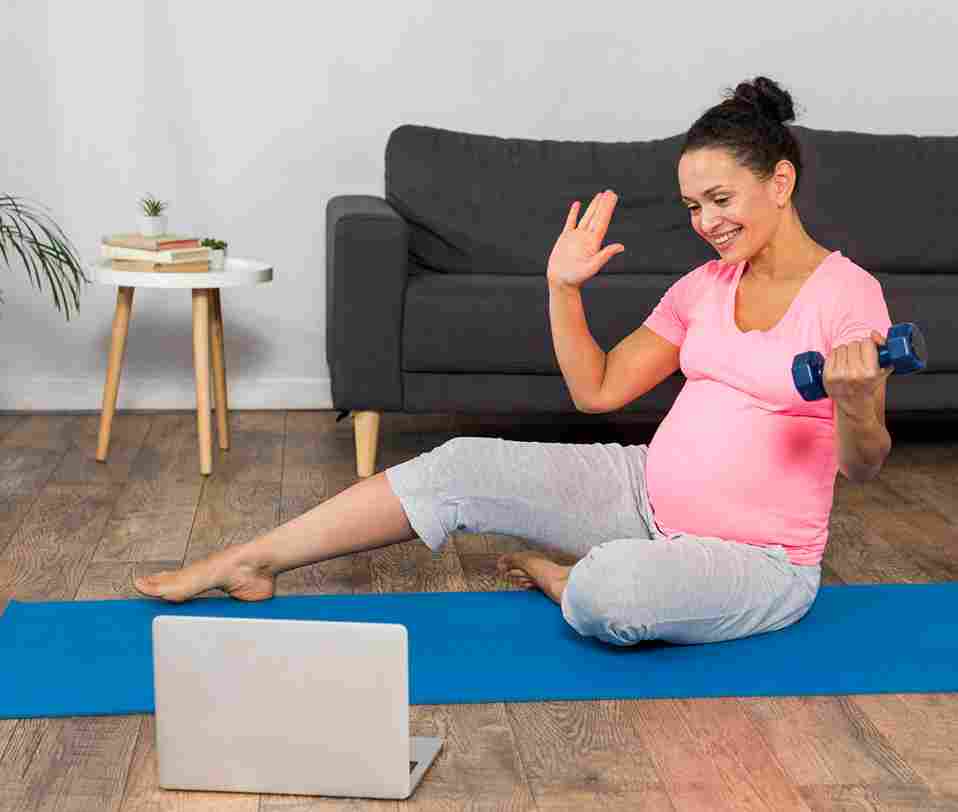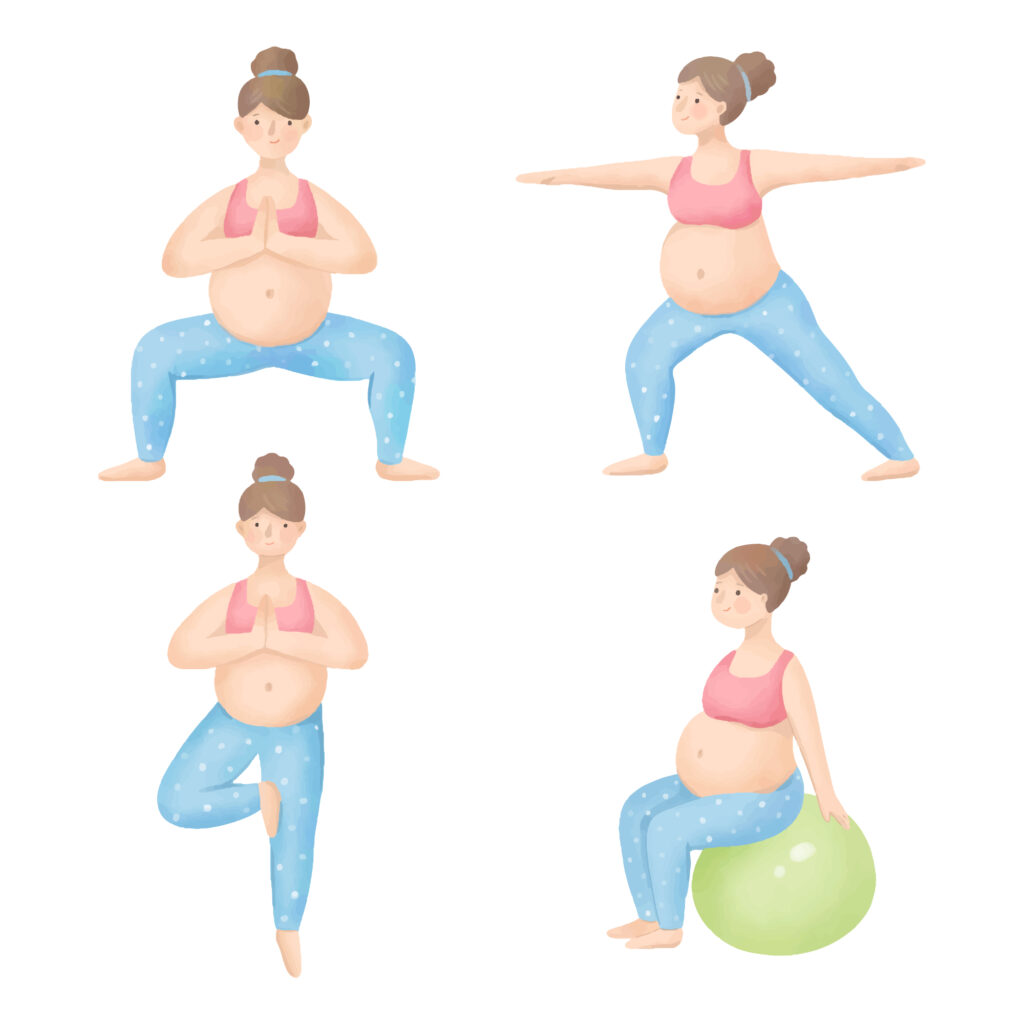


In this blog, we will explore the importance of kegel exercises for pregnancy and provide step-by-step instructions on how to perform kegel exercises for pregnant women effectively.
Pregnancy is a miraculous journey—one that brings immense joy and anticipation, but it also presents unique challenges to a woman’s body. As the body undergoes significant changes to accommodate the growing baby, it’s crucial to prioritize physical health and well-being. One often-overlooked aspect of prenatal care is the practice of Kegel exercises for pregnancy. These simple yet effective exercises can play a pivotal role in ensuring a smoother pregnancy, promoting a more comfortable childbirth experience, and aiding in postpartum recovery.
Many women believe doing any sort of physical activity during pregnancy is a big no-no, but this is not at all true. Strengthening exercises can help the perineum relax during childbirth and avoid urinary incontinence after delivery.

During pregnancy, the woman’s body undergoes a variety of changes, including hormonal fluctuations and the added weight of the growing baby. Fortunately, kegel exercise for pregnant women helps ease the aches and pains of pregnancy and childbirth. The muscles of the pelvic floor during pregnancy lose their elasticity due to the pressure of the uterus; the muscle fibres stretch and become less elastic.
Kegel exercise for pregnant women involves contracting the pelvic muscles, holding the contractions for a few seconds, and then slowly relaxing. It is recommended to perform these regularly and under the guidance of a specialist to ensure correct execution and maximum results.
When commencing your kegel exercises for your pregnancy, maintaining consistency and focused dedication is vital.

Kegel exercises, named after Dr. Arnold Kegel who developed them in the 1940s, focus on strengthening the pelvic floor muscles. The pelvic floor muscles provide crucial support to the bladder, uterus, and rectum, helping to maintain control over urination, bowel movements, and even sexual function. During pregnancy, these muscles are subjected to increased pressure and stress, which can lead to issues like urinary incontinence and discomfort. Kegel exercises offer a targeted way to enhance the strength, flexibility, and endurance of these muscles, contributing to better overall pelvic health.
If you want to try kegel exercises during pregnancy, it will be best to ask your OB-GYN before starting. Your doctor can assess your health, pregnancy status, and any potential risk factors and offer guidance on the same.
In general, pregnant women can start practising kegel exercises as early as the first trimester of pregnancy. During this time, your body is undergoing initial changes and it’s a great chance to establish a foundation for pelvic floor muscle strength. Starting early will also allow you to gradually build muscle tone and prepare for the later stages of pregnancy.
Keep in mind that Kegel exercises aren’t limited to pregnancy alone. Even after childbirth, these exercises can aid in postpartum recovery and help restore pelvic floor muscle tone.
Kegel exercises are based on slow muscle contractions and pushing movements. It is of particular importance for pregnant women, as it helps control the vaginal and pubococcygeal muscles. These exercises will help pregnant women:

Performing Kegel exercises is relatively simple, but it’s essential to ensure the correct technique for optimal results.
01. Identify the Right Muscles:
The first step is to locate the pelvic floor muscles. Imagine stopping the flow of urine midstream or tightening the muscles that prevent passing gas. These activities require the use of your pelvic floor muscles.
02. Choose a Comfortable Position:
Sit, stand, or lie down in a comfortable position. You can start by lying on your back with your knees bent or sitting with your feet flat on the floor.
03. Contract:
Gently contract your pelvic floor muscles. You can feel a lifting sensation in the pelvic area. Focus solely on your pelvic floor muscles; avoid tightening your abdomen, buttocks, or thighs. Breathe normally during the exercise.
04. Hold:
Hold the contraction for approximately 3 to 5 seconds. Gradually work your way up to longer holds as your muscles become stronger over time.
05. Relax and Repeat:
After the contraction, release the muscles and rest for an equal amount of time (3 to 5 seconds). Do 10 repetitions three times a day (morning, afternoon, and night), but be sure to listen to your body.
Remember, Kegel exercises should feel comfortable and controlled. If you’re unsure whether you’re performing them correctly or if you experience any discomfort, consider consulting your doctor or a pelvic floor physical therapist. They can provide personalised guidance and ensure you’re doing the exercises effectively.

Pregnancy and childbirth can cause problems that are difficult for people to talk about, such as urinary incontinence. Such issues may be improved by performing exercises that train the kegel muscles. Kegel exercises help strengthen the pelvic floor muscles during pregnancy and childbirth.
Before starting pelvic floor exercises during pregnancy, it is necessary to have a firm grasp of your physical condition. If you feel sick during exercise, stop immediately. Pelvic floor exercises during pregnancy can be done while lying on your back, standing, or sitting, so you can do them comfortably according to your condition. When you incorporate these exercises into your daily routine, you can take charge of your pelvic health, reduce the risk of urinary incontinence, prepare for childbirth, and enhance your overall well-being.
By regularly doing pelvic floor exercises during pregnancy, you’re not only preparing your body for childbirth but also investing in your long-term health. As you embark on this beautiful journey, remember that every small effort contributes to a healthier you.